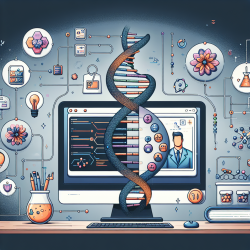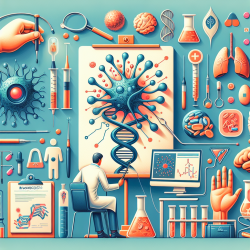In the rapidly evolving field of online therapy services, staying ahead of technological advancements is crucial. TinyEYE, a leader in providing online therapy services to schools, can benefit significantly from the recent research on encoding digital data in deoxyribonucleic acid (DNA). This groundbreaking study, "In-vitro validated methods for encoding digital data in deoxyribonucleic acid (DNA)," provides insights that can enhance the efficiency and security of digital data storage and retrieval in our services.
Understanding DNA Data Storage
DNA, the molecule that carries genetic instructions in living organisms, is emerging as a viable alternative for digital data storage. This is due to its high data density, durability, and low energy requirements. The research by Mortuza et al. (2023) reviews various methods for encoding digital data into DNA, emphasizing in-vitro validated techniques that ensure real-world applicability.
Key Takeaways for Practitioners
Practitioners in the field of online therapy can leverage these insights to improve data management and security. Here are some key takeaways:
- High Data Density: DNA can store vast amounts of data in a minuscule volume. This can be particularly useful for archiving extensive therapy session records and client information securely.
- Durability: DNA is incredibly stable and can retain information for thousands of years under proper conditions. This ensures long-term data preservation without the need for frequent migrations to new storage media.
- Energy Efficiency: DNA data storage requires significantly less energy compared to traditional electronic storage methods. This can reduce the operational costs associated with data storage and retrieval.
- Error Correction: The study highlights advanced error correction techniques, such as Reed-Solomon (RS) codes, which can be integrated into digital systems to enhance data integrity and reliability.
Implementing DNA Data Storage Techniques
For practitioners looking to implement these techniques, it is essential to start with a pilot project. Here’s a step-by-step approach:
- Assess Current Data Storage Needs: Evaluate the volume and sensitivity of the data you currently store and identify areas where DNA data storage could provide the most benefit.
- Collaborate with Experts: Partner with researchers or companies specializing in DNA data storage to understand the technical requirements and feasibility.
- Integrate Error Correction: Implement robust error correction algorithms, such as RS codes, to ensure data integrity during storage and retrieval processes.
- Conduct Pilot Testing: Start with a small-scale pilot to test the integration of DNA data storage with your existing digital infrastructure. Monitor performance and make necessary adjustments.
- Scale Up: Once the pilot proves successful, gradually scale up the implementation to cover more extensive data storage needs.
Encouraging Further Research
While the potential of DNA data storage is immense, it is still an emerging field. Practitioners are encouraged to stay informed about ongoing research and advancements. Participating in collaborative research projects or attending relevant conferences can provide valuable insights and networking opportunities.
Conclusion
Integrating DNA data storage techniques can revolutionize the way we manage and secure digital data in online therapy services. By leveraging the high data density, durability, and energy efficiency of DNA, practitioners can enhance the quality and reliability of their services. To read the original research paper, please follow this link:
In-vitro validated methods for encoding digital data in deoxyribonucleic acid (DNA).










